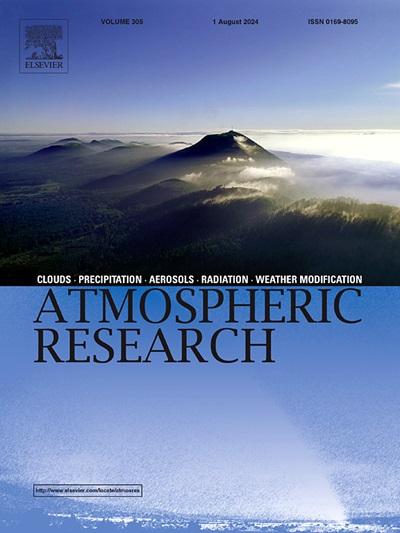Will the world experience more fractal droughts?
IF 4.5
2区 地球科学
Q1 METEOROLOGY & ATMOSPHERIC SCIENCES
引用次数: 0
Abstract
Meteorological droughts will become the principal factor driving compound hot-dry events and analysis thereof is therefore fundamental with regard to understanding future climate patterns. The average citizen knows little of geometry, but it plays an essential role in the characteristics of the droughts, by means of “fractional lengths”. We analyzed the fractality of the meteorological droughts under the most recent climate change scenarios. A temporal fractality measure based upon the Cantor set reveals consensual changes in the behavior of droughts worldwide. Most regions will undergo a slight increase in fractality (up to +10 % on average), particularly associated with an acceleration of the hydrological cycle and the Hadley cell expansion, with a shift towards the higher latitudes of the tropical edge in both hemispheres. Geometrical measures were applied to the dry spells (<1 mm) at a daily scale simulated by the SSP2–4.5 and SSP5–8.5 scenarios from 10 different Earth System Models of the Coupled Model Intercomparison Project Phase 6 (CMIP6). The historical experiment was used as a baseline (1981–2010) and also compared to the ERA5 reanalysis. The results show an increasingly concentrated or uneven distribution of droughts in mid-latitudes towards the end of the century, becoming more intense the more pessimistic the scenario selected. Simultaneously, the polar regions might benefit from more regular precipitation patterns. Other inequality measures, such as the indices of Gini and Monjo, showed similar results. In general terms, the earth's climate will be more fractal in the rainfall-related patterns, which likely means that the consequences will be more catastrophic for the human population.
求助全文
约1分钟内获得全文
求助全文
来源期刊

Atmospheric Research
地学-气象与大气科学
CiteScore
9.40
自引率
10.90%
发文量
460
审稿时长
47 days
期刊介绍:
The journal publishes scientific papers (research papers, review articles, letters and notes) dealing with the part of the atmosphere where meteorological events occur. Attention is given to all processes extending from the earth surface to the tropopause, but special emphasis continues to be devoted to the physics of clouds, mesoscale meteorology and air pollution, i.e. atmospheric aerosols; microphysical processes; cloud dynamics and thermodynamics; numerical simulation, climatology, climate change and weather modification.
 求助内容:
求助内容: 应助结果提醒方式:
应助结果提醒方式:


